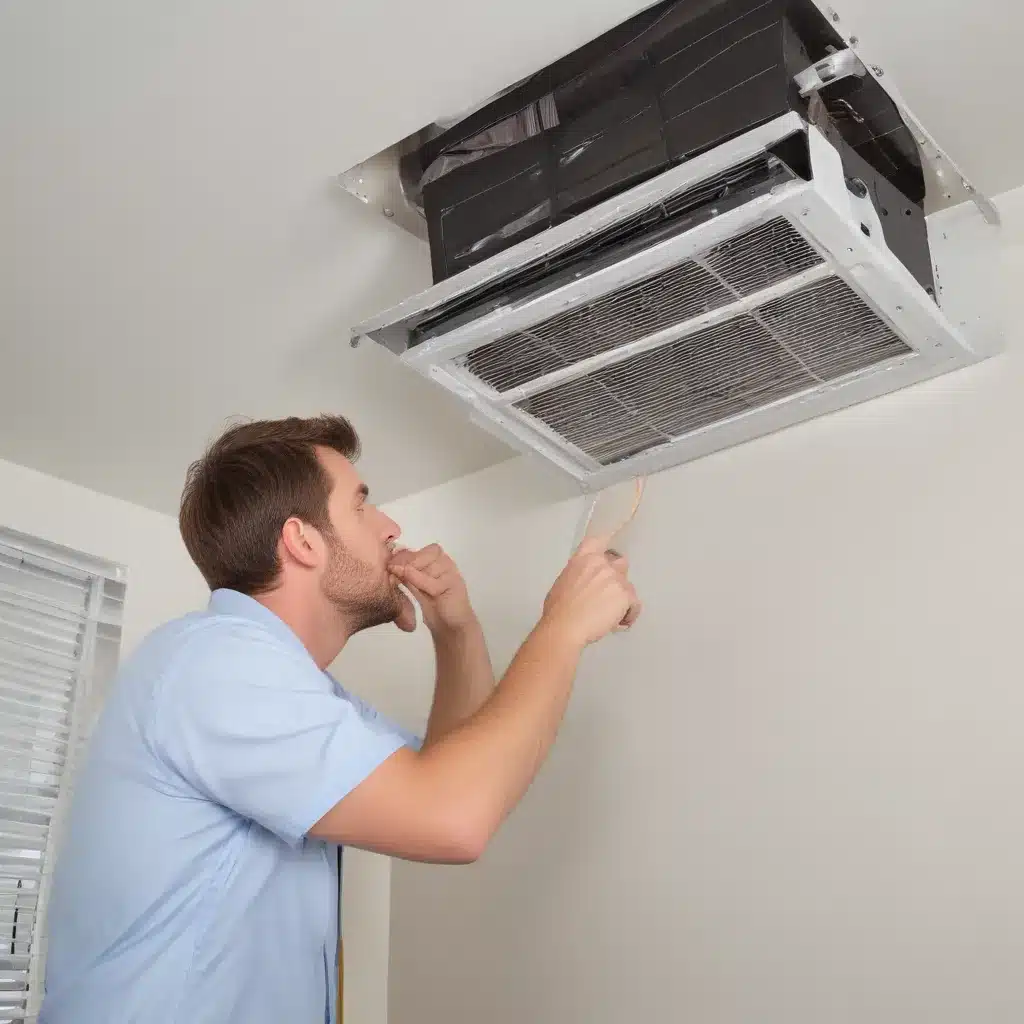
Improving Indoor Air Quality: HVAC Solutions for Allergy and Asthma Relief
HVAC Solutions for Indoor Air Quality
Now, this might seem counterintuitive when dealing with air conditioning systems…
Heating and Cooling Systems
Maintaining optimal indoor comfort and air quality starts with efficient HVAC systems. In our 10 years of HVAC service experience… Furnaces and boilers have undergone significant technological advancements in recent years. High-efficiency models now offer up to 98% AFUE (Annual Fuel Utilization Efficiency) ratings, ensuring more of the fuel is converted into usable heat rather than being wasted. This not only reduces utility bills but also minimizes the release of pollutants into the air.
For cooling, ductless mini-split air conditioners have gained popularity for their ability to provide targeted, energy-efficient climate control. These systems forgo bulky ductwork, allowing for installation flexibility and improved airflow control. By delivering conditioned air directly to each room, ductless mini-splits can help reduce indoor humidity and prevent the buildup of allergens like dust mites.
Integrating programmable thermostats into your HVAC system takes climate control a step further. These smart devices allow you to pre-set temperature and humidity preferences, ensuring your home or facility maintains optimal comfort levels throughout the day and night. Some models even offer remote access, enabling you to make adjustments from your smartphone or tablet for maximum control and convenience.
Air Filtration and Purification
One of the most effective ways to improve indoor air quality is through advanced air filtration and purification technologies. High-Efficiency Particulate Air (HEPA) filters are designed to capture up to 99.97% of airborne particles as small as 0.3 microns, including pollen, pet dander, and dust mites – common triggers for allergy and asthma sufferers.
Beyond mechanical filtration, ultraviolet (UV) light air sanitizers can provide an additional layer of protection. These systems use specialized UV-C lamps to inactivate airborne microorganisms, such as bacteria, viruses, and mold spores, helping to maintain a cleaner, healthier indoor environment.
Proper humidity control is also crucial for allergy and asthma relief. Dehumidifiers can help reduce moisture levels, inhibiting the growth of dust mites and mold – two of the most prevalent indoor allergens. Conversely, humidifiers can help soothe irritated nasal passages and airways during the dry winter months.
Preventative Maintenance Strategies
Consistent HVAC maintenance is key to ensuring your heating and cooling systems operate at peak efficiency, providing optimal indoor air quality. Regular system inspections allow technicians to identify and address any equipment issues before they become larger problems.
Routine air filter changes are a simple but essential task. As air circulates through your HVAC system, filters trap dust, pollen, and other airborne particles. Over time, these filters become clogged, reducing airflow and allowing contaminants to bypass the filtration process. Replacing filters every 1-3 months (depending on usage and indoor conditions) helps maintain optimal system performance and indoor air quality.
For whole-home comfort and air purity, duct cleaning and sealing should also be part of your HVAC maintenance regimen. Leaky or dirty ductwork can allow allergens and pollutants to circulate throughout your living or work spaces. Sealing duct joints and having your ducts professionally cleaned can significantly improve air circulation and distribution.
Lastly, refrigerant monitoring and recharging should not be overlooked. Proper refrigerant levels are crucial for efficient cooling and dehumidification. Catching and addressing any refrigerant leaks early on can prevent costly system breakdowns and double-check that your air conditioning continues to function at its best.
Improving Energy Efficiency
Upgrading to high-efficiency HVAC equipment is one of the most impactful ways to enhance both indoor air quality and energy savings. Modern furnaces, boilers, and air conditioners incorporate advanced technologies that dramatically reduce energy consumption compared to older models. When evaluating potential upgrades, be sure to assess the energy-saving potential and explore any available rebates or incentives that can offset the initial investment.
In addition to high-efficiency systems, insulation and air sealing play a crucial role in maximizing your HVAC system’s performance. By addressing air leaks around windows, doors, and other building envelope penetrations, you can help prevent conditioned air from escaping and unconditioned outdoor air from infiltrating. Proper insulation further enhances thermal comfort and minimizes the strain on your heating and cooling equipment.
Integrating your HVAC system with smart home technology takes energy efficiency to the next level. Programmable and Wi-Fi-enabled thermostats allow for precise, automated climate control, while remote monitoring and diagnostics capabilities can help identify and address issues before they become major problems. By optimizing energy use based on occupancy patterns and environmental conditions, smart HVAC integration can deliver significant cost savings and enhanced indoor air quality.
Seasonal HVAC Preparation
Maintaining your HVAC system year-round is essential for reliable performance and improved indoor air quality. Before the heating season begins, scheduling a pre-heating season tune-up ensures your furnace or boiler is operating at peak efficiency. This service typically includes cleaning, adjusting, and calibrating critical components, as well as verifying proper thermostat function.
Likewise, a pre-cooling season inspection of your air conditioning system is recommended. Technicians will check refrigerant levels, clean the condenser coil, and address any potential issues to double-check that your cooling equipment is ready to handle the summer heat and humidity. Proper refrigerant levels are particularly important, as low or leaking refrigerant can significantly compromise cooling performance and indoor air quality.
As the seasons change, weatherization and winterization practices become essential. Sealing drafts, insulating exposed pipes, and protecting outdoor equipment help maintain optimal indoor comfort and prevent potential system failures. These preventative measures not only safeguard your HVAC investment but also contribute to improved energy efficiency and better indoor air quality year-round.
By proactively maintaining your HVAC system, upgrading to high-efficiency equipment, and incorporating advanced filtration and purification technologies, you can create a healthier, more comfortable indoor environment for you and your family or employees. For personalized guidance on enhancing your indoor air quality, reach out to the HVAC experts at US Air Contractors.
Example: Smart Thermostat Installation Guide 2023


